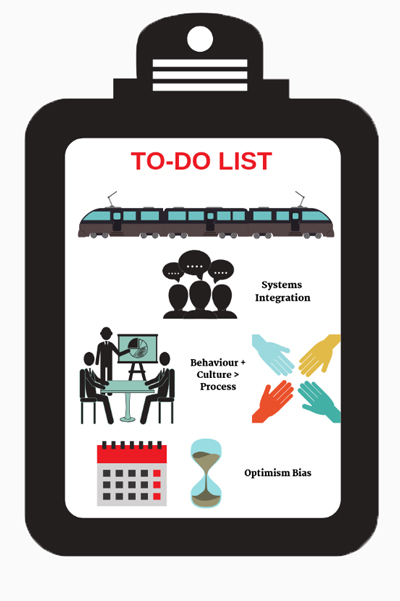
Matthew Vickerstaff
Deputy CEO and Head of Project Finance, Infrastructure and Projects Authority
It’s hard to ignore the challenges we are currently facing on some of our biggest infrastructure projects. We are seeing delays to Crossrail and increasing cost pressures on HS2. There’s also no doubt that the construction industry is in a fairly turbulent state.

So what can be done to improve future delivery? We need to make sure we are learning the right lessons from previous projects and that we are applying this knowledge going forward.
The IPA has been working closely with the Department for Transport, doing exactly this. Internal analysis on recent transport projects has highlighted what we can learn to prevent the same problems occurring in future.
We found that, while the causes of failure in each case were different, there were some shared features that are important to learn from and apply.
We’ve found, what I believe, are the
critical three areas we need to up our game and adapt our approach:
1. Behaviours and culture are more important than processes
You can have the best, most well designed governance structure in the world, but really, it comes down to the behaviours and culture of the people in the system.
There are common traits that can lead to the wrong behaviours and decisions on major projects, such as having a blind commitment to succeed without a balanced perspective.
These behavioral patterns need to be searched for, recognised when they exhibit, and actively countered through calm and objective assessment of the evidence, and by instilling the right behaviours within and between organisations.
We can do this by:
- Ensuring the right level of transparency as a way of changing behaviour, especially when multiple stakeholders are involved;
- Using levers such as control gates and assurance reviews as an opportunity to step back and consider things objectively;
- Investing in contingency plans to help prepare for the most significant risks and enable better decision-making.
It’s also important to invest in building relationships between projects leaders in the department, delivery organisation and suppliers, so they can agree jointly on the best route to recovery when challenges arise.
2. We need to get real with optimism bias
While it’s important we have enthusiasm and positivity in a project, it does need to be checked regularly.
We can do this by:
- Establishing clear accountabilities and holding boards to account for delivering to cost and schedule;
- Providing the right amount of space to enable delivery, without losing oversight;
- Evolving sponsorship over the project lifecycle, as different stages require different skills and experiences. Just because a successful approach worked at one stage, it doesn’t mean it will in the next.
Most importantly, if there is evidence of delays or cost escalations, then the sponsors need to act decisively, rather than just hoping the situation can be recovered later.
3. We must pay greater attention to systems integration
Technology is becoming more and more critical to delivery, but it isn’t getting the same level of attention and focus as traditional construction and civil engineering.
This issue has been present in the rail sector for some time now, and this is only going to increase and grow in other sectors.
We can address this by:
- Allowing enough time for system testing;
- Having clear organisational accountability for systems integration;
- Reducing risk by controlling complexity.
Perhaps most importantly, we need to invest in the people with the skills to manage these technological risks and attract them to the industry.
Embedding these lessons into the system
We now need to up our game and make it fit for the future.
We must see these three challenges as
opportunities and speak openly and honestly so we can address them.

